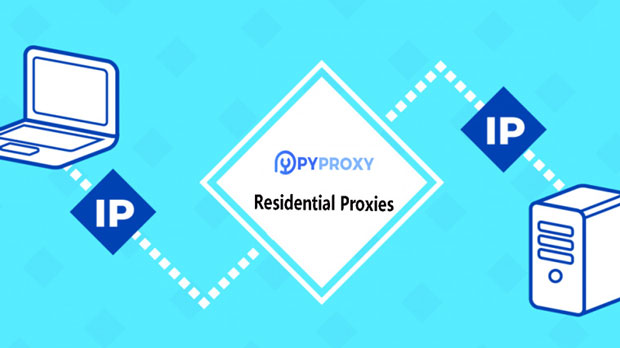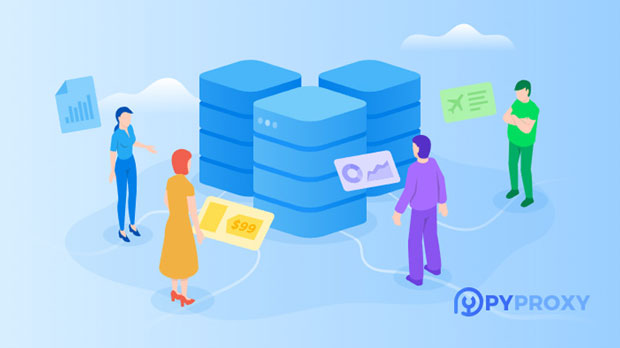Why might the detection results misclassify proxy IPs?
Detecting proxy ips is a complex task that involves analyzing various data points to determine whether an IP address is masking the user's true identity. However, proxy detection results can often be inaccurate due to various factors. These inaccuracies may arise from the dynamic nature of internet technologies, the use of sophisticated proxy tools, or inconsistencies in how detection systems analyze data. Understanding why detection results may misjudge proxy ips is crucial for businesses and individuals who rely on accurate detection systems. This article will explore the reasons behind such misjudgments, the impact they can have, and potential solutions to improve detection accuracy. Complexity of Proxy Detection SystemsProxy detection relies on identifying patterns in IP behavior, network traffic, and the overall user activity. However, proxy systems are continuously evolving, making it increasingly difficult for detection systems to keep up with these changes. For instance, some proxy services use encryption to mask the true identity of users, while others rotate IP addresses frequently to avoid detection. These methods can make it challenging for traditional detection algorithms to distinguish between genuine users and those hiding behind proxies.Moreover, some proxy IPs may appear legitimate due to their origin from trusted sources. Large-scale VPN providers or data centers may use IP addresses that are not typically flagged by detection systems, which increases the risk of false negatives. As a result, detection systems may misclassify certain proxy IPs as legitimate, further complicating the detection process.Dynamic Nature of IP AddressesAnother reason why proxy IP detection results may be inaccurate is the dynamic nature of IP addresses. Many internet service providers (ISPs) assign dynamic IPs to their users. This means that the same IP address can be shared by multiple users at different times. For example, a user may temporarily share an IP address with someone using a proxy server. Over time, these shared IPs may appear as proxies in the detection system, even though the majority of the users associated with the IP are legitimate.Additionally, certain IP addresses might be used for both legitimate and suspicious activities. For example, a data center IP could serve legitimate customers during the day and handle proxy traffic during the evening. These variations in usage patterns can confuse proxy detection systems, leading to false positives or negatives. Thus, IP addresses that are shared or used across different purposes create an added layer of complexity for detection algorithms.Proxy Type and Its Impact on DetectionThere are several types of proxies, including VPNs, residential proxies, data center proxies, and more. Each type operates differently and poses unique challenges for detection systems. Some proxies, like residential proxies, use real IP addresses from everyday consumers, making them harder to distinguish from legitimate traffic. These proxies blend in with regular user traffic, making it difficult for detection systems to identify them as malicious.On the other hand, data center proxies are hosted in large server farms and typically share IP ranges with other users. While these proxies may be easier to detect due to their clustered nature, detection systems still struggle with distinguishing between legitimate traffic from data centers and actual malicious activity. If a legitimate business uses a data center for its operations, the system may misclassify its traffic as proxy traffic.Furthermore, VPNs that encrypt internet traffic can obscure the true source of the connection, complicating detection. These VPNs often change IP addresses frequently, which means that tracking the origin of the traffic becomes much more difficult for detection systems.False Positives and False NegativesProxy detection systems are prone to both false positives and false negatives. False positives occur when a detection system incorrectly identifies a legitimate user as a proxy, while false negatives happen when a proxy is mistaken for a legitimate user. Both types of errors can have significant consequences for businesses relying on accurate proxy detection.A false positive may result in legitimate users being denied access to a website or service, damaging the user experience and potentially harming the brand's reputation. In contrast, a false negative allows a proxy user to bypass the detection system, potentially exposing the business to fraud or malicious activity. Striking the right balance between detecting proxies accurately and minimizing errors is a major challenge for detection systems.The Impact of VPN and Proxy Network AdvancementsThe rise of sophisticated proxy and VPN networks has made detection even more challenging. Many VPN providers offer advanced features, such as rotating IP addresses, residential IP pools, and encryption protocols, which are designed to bypass traditional detection methods. These networks are constantly evolving to avoid detection by using techniques like stealth mode, where the VPN or proxy is designed to look like normal, unmodified user traffic.Additionally, some proxy networks use geo-spoofing techniques, where they manipulate the perceived geographic location of the user. By changing the location from which the traffic appears to originate, these proxies can avoid detection based on geographic patterns. For instance, if a website has a policy to block traffic from certain countries, a proxy can simply change the user's IP location to another region, making it appear as though the user is legitimate.As proxy technology continues to advance, detection systems need to adapt to these new tactics. Unfortunately, many detection systems are not updated frequently enough to stay ahead of these changes, leading to inaccuracies in detecting proxy IPs.Improving Detection AccuracyTo enhance the accuracy of proxy detection, it is essential for businesses to employ more advanced detection methods that combine multiple data points. These methods may include analyzing traffic behavior, checking for inconsistencies in the user’s browsing patterns, or using machine learning algorithms to identify anomalies. A multi-layered approach can increase the chances of accurately detecting proxy IPs while minimizing errors.Additionally, businesses can incorporate techniques like device fingerprinting, which identifies unique characteristics of a user’s device, regardless of the IP address. This method allows businesses to track users across multiple sessions, making it more difficult for proxy users to disguise their activity. By combining IP address analysis with device fingerprinting, businesses can achieve a more robust and accurate detection system.Regularly updating the detection system is also crucial to keep pace with new proxy technologies. As proxy services become more sophisticated, detection systems must evolve to identify new patterns and behaviors associated with these proxies. Investing in research and development to improve detection algorithms can help businesses stay ahead of proxy users who attempt to bypass detection systems.ConclusionIn summary, detecting proxy IPs is a challenging task due to the dynamic and evolving nature of both proxies and the internet as a whole. The complexity of proxy detection, the dynamic nature of IP addresses, the variety of proxy types, and the advancements in VPN and proxy networks all contribute to the potential for misjudging proxy IPs. False positives and false negatives are common pitfalls that can impact businesses in various ways. To improve detection accuracy, businesses should adopt multi-layered approaches, leverage advanced technologies, and regularly update their detection systems to keep pace with evolving proxy tactics. By doing so, they can better protect their services from fraud and malicious activity while minimizing the risk of inaccurate proxy detection results.
2025-02-04
























































